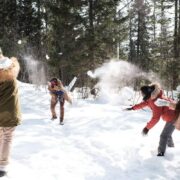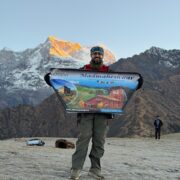
Chopta Tungnath Trek: A Cultural Journey Through Himalayan Traditions, Festivals, and Flavors
Tungnath Trek: Experiencing Spiritual Traditions During the Monsoon
Chopta Tungnath trek is not just a scenic Himalayan journey—it’s a sacred pilgrimage that deepens in meaning during the monsoon. As clouds descend and the rain purifies the earth, the spiritual energy of Tungnath Temple, the highest Shiva temple in the world, becomes even more palpable.
The Sacred Essence of Tungnath
- Tungnath Temple is part of the revered Panch Kedar circuit, believed to be built by the Pandavas as an act of penance.
- Located at 3,680 meters, it marks the spot where Lord Shiva’s arm appeared after he took the form of a bull.
- The temple opens seasonally, typically from May to November, and is a hub for spiritual seekers, especially during Shravan month and Mahashivratri.
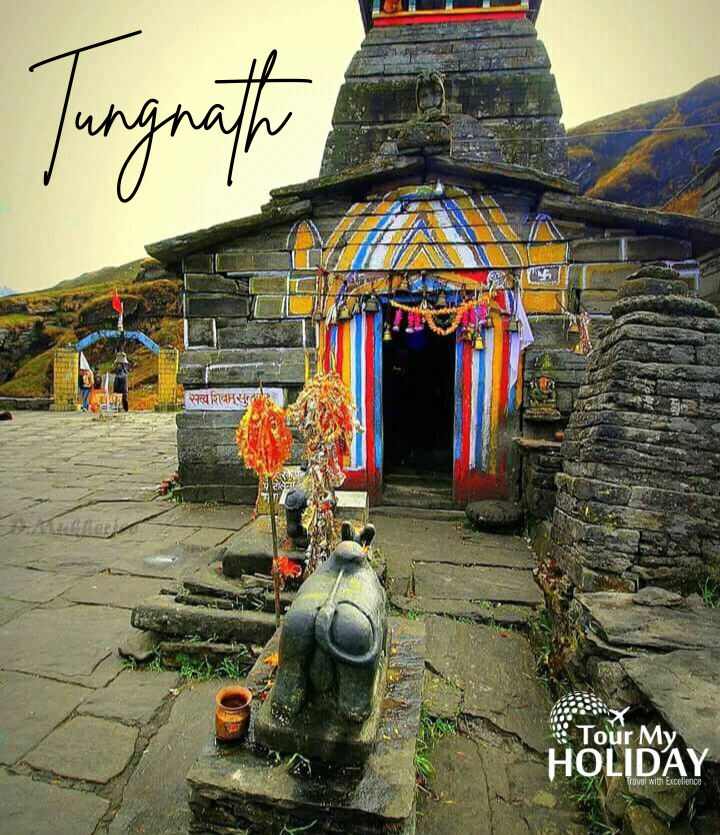
Monsoon’s Mystical Transformation
Monsoon turns the Tungnath trek into a soulful experience:
- Fewer pilgrims mean quieter trails and more time for reflection.
- Mist-covered forests and rain-washed meadows create a dreamlike setting.
- The scent of wet earth, blooming rhododendrons, and distant birdcalls enhance meditative awareness.
- The temple shrouded in clouds feels like a divine sanctuary suspended between heaven and earth.
Spiritual Practices & Rituals
Even in the rain, rituals continue with reverence:
- Morning and evening aarti performed by local priests.
- Devotees offer milk, flowers, and prayers to Lord Shiva.
- Pradakshina (circumambulation) around the temple is a symbolic act of devotion.
- Many trekkers meditate near the temple, finding peace in the rhythmic drizzle and silence.
Connecting Deeply with the Divine
The monsoon trek becomes a pilgrimage of introspection:
- The physical challenge of the 3.5 km trek from Chopta is softened by the calming rain.
- The solitude allows for deeper spiritual connection—each step becomes a mantra.
- The Chandrashila summit, just 1.5 km beyond Tungnath, offers panoramic views (if clouds part), but even in fog, the ascent feels like a journey into the divine.

Why Monsoon Enhances the Experience
Tips for a Monsoon Spiritual Trek
- Start early to avoid afternoon showers.
- Hire a local guide for safety and cultural insights.
- Carry waterproof gear and trekking poles.
- Avoid camping near streams or landslide-prone zones.
- Respect the silence—let nature and prayer guide your journey.
Chandrashila Summit Trek: Legends and Myths in the Rainy Season
The Chandrashila Summit Trek, rising above the sacred Tungnath Temple, is more than a high-altitude adventure—it’s a journey into myth, mysticism, and the soul of the Himalayas. During the monsoonseason, the trail transforms into a surreal realm where ancient legends seem to whisper through the mist.
The Mythical Significance of Chandrashila
Chandrashila, meaning “MoonRock”, is steeped in spiritual lore:
- LordRama’sMeditation: After defeating Ravana, Lord Rama is said to have meditated at Chandrashila to seek peace and absolution.
- Moon God Chandra’s Penance: Another legend claims that Chandra, the Moon God, performed penance here, giving the summit its celestial name.
- Trekkers often describe a deep calm at the summit, as if the energies of ancient meditations still linger in the air.
Monsoon: When Legends Come Alive
The rainy season adds a mystical layer to the trek:
- Misty forests and cloud-veiled peaks create an ethereal atmosphere, perfect for storytelling and introspection.
- Fewer trekkers mean quieter trails, amplifying the spiritual solitude.
- The sound of rain on rhododendron leaves and the sight of swirling fog evoke a timeless, almost mythical ambiance.
- Sudden weather shifts—like snowfall near Tungnath even in monsoon—feel like nature responding to faith.
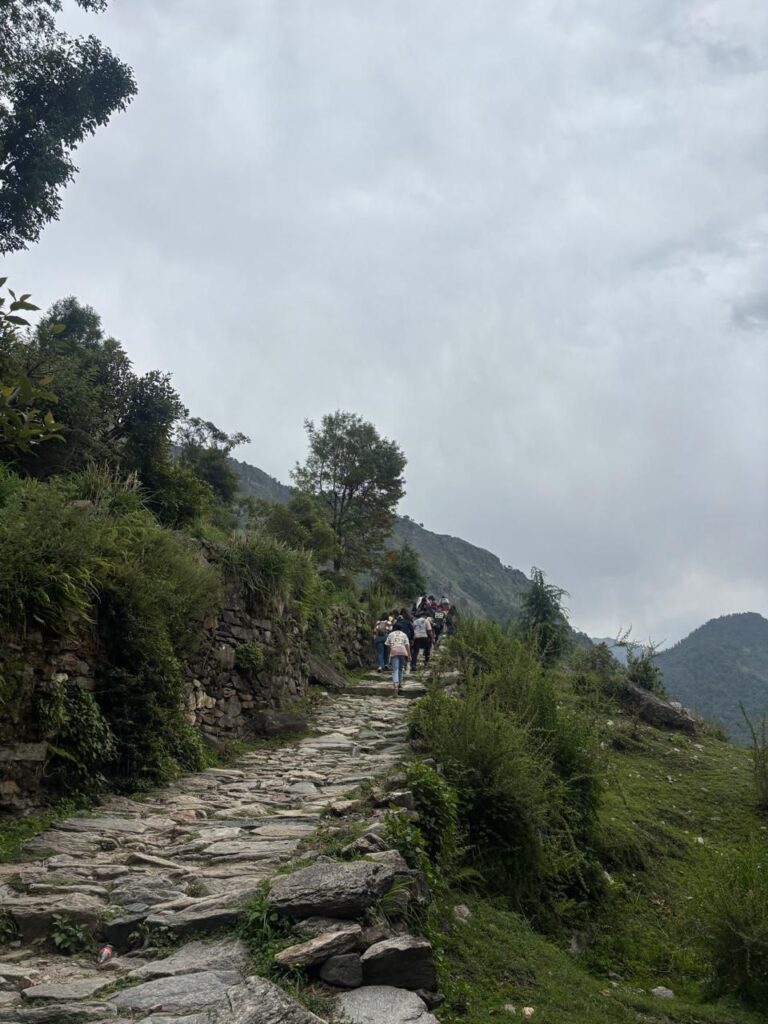
Nature as a Spiritual Companion
- Rhododendron forests, oak groves, and wildflowers bloom vibrantly post-rain, symbolizing renewal.
- Birdsong and distant thunder create a natural soundtrack to your ascent.
- The trek becomes a pilgrimage through nature, where every step feels guided by unseen forces.
Tips for a Myth-Inspired Monsoon Trek
- Read the Ramayana or local legends before your trek to enrich the experience.
- Meditate at the summit—even a few minutes can feel transformative.
- Hire a local guide who knows the stories and can share them along the way.
- Carry waterproof gear, but also a journal to record your reflections.
The Chandrashila Summit Trek in monsoon isn’t just about reaching a peak—it’s about entering a realm where myth and mist intertwine, and where the mountains seem to echo the prayers of ancient sages. Whether you’re a spiritual seeker or a curious adventurer, this trek offers a rare chance to walk through stories older than time.
Chopta Tungnath Trek from Delhi: Embracing Local Traditions and Festivals
The Chopta Tungnath Trek from Delhi isn’t just a Himalayan adventure—it’s a cultural pilgrimage through the heart of Garhwal. As trekkers ascend toward Tungnath Temple and Chandrashila Summit, they encounter not only breathtaking landscapes but also the vibrant traditions, festivals, and folklore of the region. These cultural experiences add depth and soul to the journey.
Sacred Peaks & Spiritual Significance
- Tungnath Temple: The highest Shiva temple in the world, part of the Panch Kedar circuit.
- Chandrashila Summit: Mythologically linked to Lord Rama and the Moon God Chandra.
- These sites are revered by locals and pilgrims alike, making the trek a blend of spirituality and adventure.

Local Festivals That Enrich the Trek
These festivals offer trekkers a chance to participate in local rituals, enjoy traditional music and dance, and taste festive Garhwali cuisine.
Cultural Immersion Along the Route
Garhwali Hospitality
- Warm welcomes in homestays and tea stalls
- Locals often share mythological stories and ancestral tales
- Trekkers may be invited to join evening bhajans or community meals
Traditional Cuisine
- Aloo ke gutke, mandua ki roti, and jhangora kheer are staples
- Meals are simple, hearty, and deeply tied to the region’s agricultural heritage
Handicrafts & Souvenirs
- Woolen shawls, handwoven caps, and wooden artifacts
- Buying local crafts supports the community and preserves tradition
Journey from Delhi to Chopta
- Distance: ~450 km (10–12 hours by road)
- Route: Delhi → Rishikesh → Rudraprayag → Ukhimath → Chopta
- Stopovers: Devprayag (river confluence), Sari Village (gateway to Deoriatal)
Many Chopta Chandrashila trek packages from Delhi include:
- Guided treks with cultural storytelling
- Festival-aligned itineraries
- Camping with local music and bonfires
Monsoon: A Time of Renewal & Reflection
- Fewer tourists mean intimate cultural experiences
- Lush landscapes and misty trails enhance the spiritual ambiance
- Local festivals during monsoon celebrate nature’s bounty and divine blessings
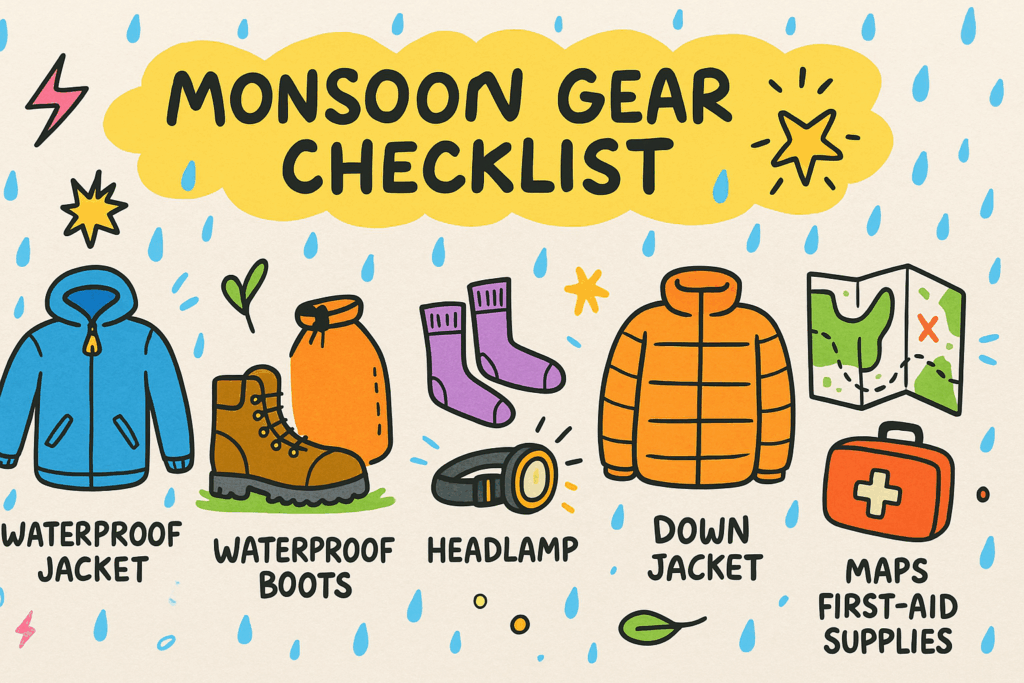
Trekking with Cultural Purpose
To truly embrace the traditions:
- Travel with local guides who share stories and rituals
- Attend temple aartis and participate in community prayers
- Respect local customs—dress modestly, avoid loud behavior near sacred sites
Chandrashila Summit Trek: Savoring Local Flavors at High Altitudes
The Chandrashila summit trek is not just a physical adventure—it’s a cultural and culinary journey. From Chopta to Tungnath and up to Chandrashila, every stop offers a taste of authentic Garhwali cuisine that comforts the soul and energizes the body.
Local Dishes That Provide Comfort and Energy
- Aloo ke Gutke: Spiced boiled potatoes sautéed with mustard seeds—perfect comfort food after a long trek.
- Mandua ki Roti: Flatbread made from finger millet, rich in iron and easy to digest at high altitudes.
- Jhangora Kheer: A light, nutritious dessert made from barnyard millet—great for satisfying sweet cravings.
- Kafuli: A thick curry made from spinach and fenugreek—warm, nourishing, and full of local flavor.
- Bhaang ki Chutney: A tangy chutney made from hemp seeds—adds zest and aids digestion.
- Buransh Juice: A refreshing drink made from rhododendron flowers—packed with antioxidants and perfect for hydration.
Where You’ll Find These Flavors
Along the Chopta–Tungnath trail, you’ll come across local dhabas, homestay kitchens, and campfire meals where these dishes are lovingly prepared. Popular spots like Magpie Restaurant and Mayadeep Camps in Chopta are known for serving authentic Garhwali meals.
Monsoon Meals: Comfort in Every Bite
During the rainy season, food becomes a source of warmth and emotional comfort:
- Hot soups and herbal teas help fight the chill.
- Simple meals like dal-rice and sabzi are gentle on the stomach.
- Local pickles and chutneys elevate the flavor and aid digestion.
In the misty monsoon atmosphere, even a humble meal feels magical—especially when shared around a campfire with fellow trekkers.
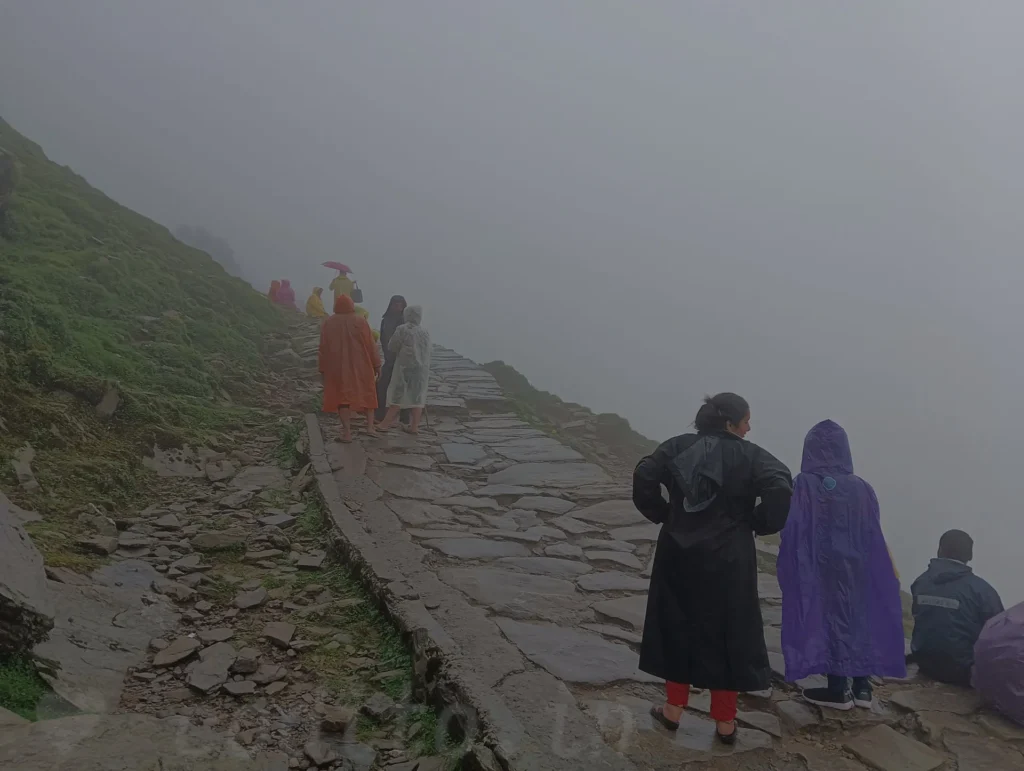
Food as a Cultural Experience
Eating in Chopta is more than just refueling—it’s a way to connect with the local way of life:
- Every dish carries the essence of traditional farming and Himalayan cooking.
- Locals often share stories and legends along with meals.
- Sharing a meal with a Garhwali family or sipping chai near a temple makes the trek truly unforgettable.
Chopta Tour Packages: A Deep Dive into Local Traditions and Cuisine
The Chopta Tungnath trek is more than a scenic Himalayan escape—it’s a cultural immersion into the heart of Garhwal. During the monsoon season, Chopta tour packages offer a unique blend of misty landscapes, sacred trails, and authentic local experiences that go far beyond trekking.
What’s Included in Chopta Tour Packages
Most packages from Delhi or Rishikesh include:
- Transport (Delhi–Chopta–Delhi)
- Accommodation in camps, cottages, or homestays
- Meals featuring local Garhwali cuisine
- Guided treks to Tungnath Temple and Chandrashila Summit
- Cultural stops like Devprayag, Ukhimath, and Dhari Devi Temple
Some packages also offer bonfire nights, local music, and nature walks through the Kedarnath Wildlife Sanctuary.
Local Traditions You’ll Experience
Monsoon is a time of renewal and reverence in the hills. Tour packages often align with:
- Shravan month rituals at Tungnath Temple
- Harela Festival (July), celebrating nature and agriculture
- Village aartis and bhajans in Ukhimath and Sari
- Storytelling sessions about Garhwali myths and legends
These cultural moments offer trekkers a chance to connect with local spirituality and seasonal rhythms.
Why Monsoon Makes It Special
- Lush green meadows and misty forests enhance the spiritual and visual appeal
- Fewer tourists mean quieter trails and deeper cultural engagement
- Local flora and fauna are at their peak—perfect for nature lovers and photographers
- Rain-washed temples and trails feel sacred and timeless
Benefits of Booking a Package
- Safety: Experienced guides help navigate slippery monsoon trails
- Convenience: No stress over transport, food, or accommodation
- Cultural immersion: Packages often include local interactions and traditional meals
- Budget-friendly: Monsoon rates are lower than peak seasons
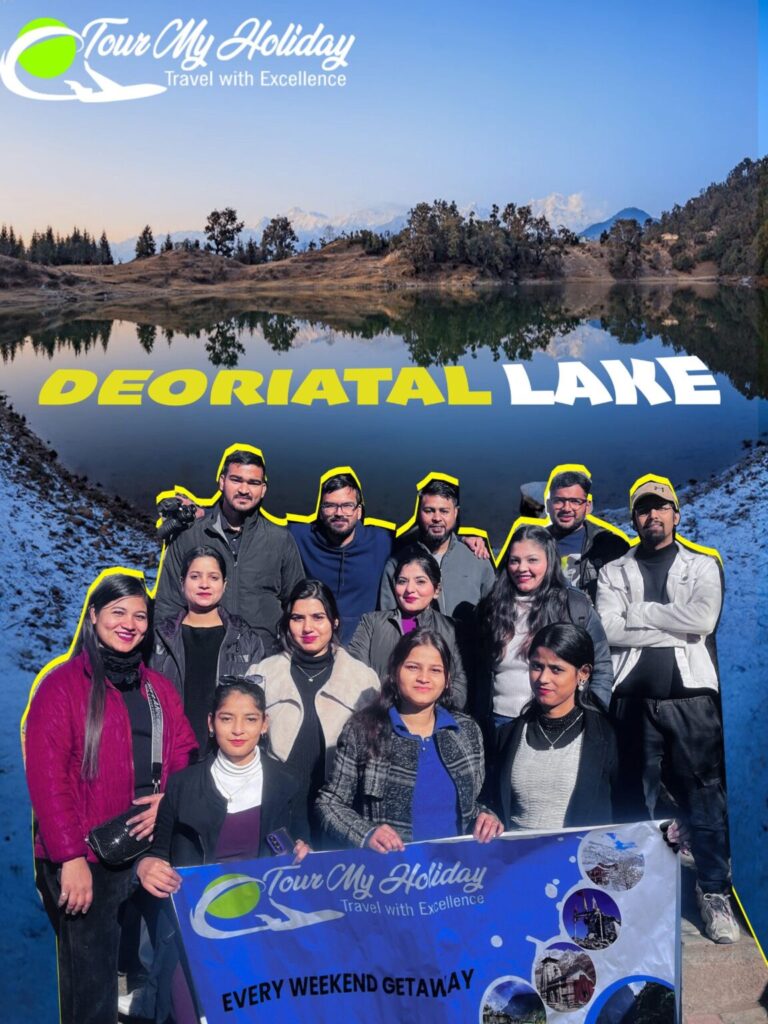
Itinerary
DAY 0: Delhi to Rishikesh to Sari Village
Journey Start Time: Depart from Botanical Garden Metro Station at 10:00 PM.
Begin your overnight journey towards Sari Village via Rishikesh.
DAY 1: Sari Village to Deoriatal
Stop at Devprayag: Witness the confluence of the Bhagirathi and Alaknanda rivers during the journey.
Arrival at Sari Village: Check in to your homestay and freshen up.
Trek to Deoriatal: Start your trek (2 . 5 km, approx. 1.5-2 hours).
Enjoy Deoriatal: Relax and take in the serene views of the lake.
Return to Sari Village: Returning to your starting point and enjoy the evening.
DAY 2: Sari Village to Tungnath & Chandrashila
Breakfast: Enjoy a hearty breakfast at your homestay.
Drive to Chopta: About 1 hour from Sari Village.
Trek to Tungnath Temple: 3.5 km trek.
Summit Chandrashila: An additional 1.5 km from Tungnath.
Return to Chopta/Sari: After completing your treks, head back for an overnight stay at Sari
DAY 3: Sari to Delhi
Breakfast: Have an early breakfast at your stay.
Early Morning Departure: Leave Sari early in the morning.
Visit Dhari Devi Temple: Stop on your way back.
Return to Delhi: A long drive of approximately 10-12 hours.
Frequently Asked Question
Is Chopta open during the monsoon?
Yes, Chopta remains open from July to September, though weather conditions can affect accessibility.
Is it safe to visit Chopta in the rainy season?
Generally yes, but trekkers should be cautious of slippery trails and occasional landslides. Hiring a local guide is recommended.
What is the weather like in Chopta during monsoon?
Temperatures range from 10°C to 20°C. Expect light to moderate rainfall, misty mornings, and lush greenery.
Can I do the Chopta Tungnath trek in monsoon?
Absolutely! The trek is magical during monsoon, with mist-covered forests and fewer crowds. Just wear proper rain gear and trekking shoes.
Is the Chandrashila summit accessible during monsoon?
Yes, but visibility may be low due to clouds. The trail can be slippery, so proceed with caution.
Are there any festivals during monsoon in Chopta?
Yes! The Shravan month is spiritually significant, with special prayers at Tungnath Temple. Locals also celebrate Harela, a nature-based festival.
What kind of food is available during monsoon treks?
Local Garhwali dishes like Aloo ke Gutke, Mandua ki Roti, and Kafuli are commonly served in homestays and camps.
Are Chopta tour packages available in monsoon?
Yes, many operators offer monsoon-specific packages with trekking, meals, and cultural experiences included.
Is camping allowed in Chopta during monsoon?
Camping on meadows is restricted, but eco-camps and Swiss tents near Chopta are available and equipped for rain.
What gear should I carry for monsoon trekking?
Rain jacket, waterproof shoes, backpack rain cover, quick-dry clothes, insect repellent, and a first-aid kit are essential.
Can I spot wildlife in Chopta during monsoon?
Yes! The Kedarnath Wildlife Sanctuary comes alive with birds like monal pheasants and animals like musk deer.
Are roads to Chopta affected by rain?
Some roads may be temporarily blocked due to landslides. Always check weather and road updates before traveling.
Is Chopta suitable for beginners in monsoon?
Yes, with proper preparation and guidance, even first-time trekkers can enjoy the Chopta Tungnath and Chandrashila treks.
Are ATMs available in Chopta?
No. Withdraw cash in Ukhimath, Rudraprayag, or Guptkashi before reaching Chopta.
Why choose a Chopta tour package in monsoon?
Packages offer convenience, safety, and cultural immersion—plus lower rates and fewer tourists during this season
Recent Posts
Chakrata in Winters
Madmaheshwar Trek Difficulty & Beginner’s Complete Guide
Chopta in Winters
Tags

Thailand


